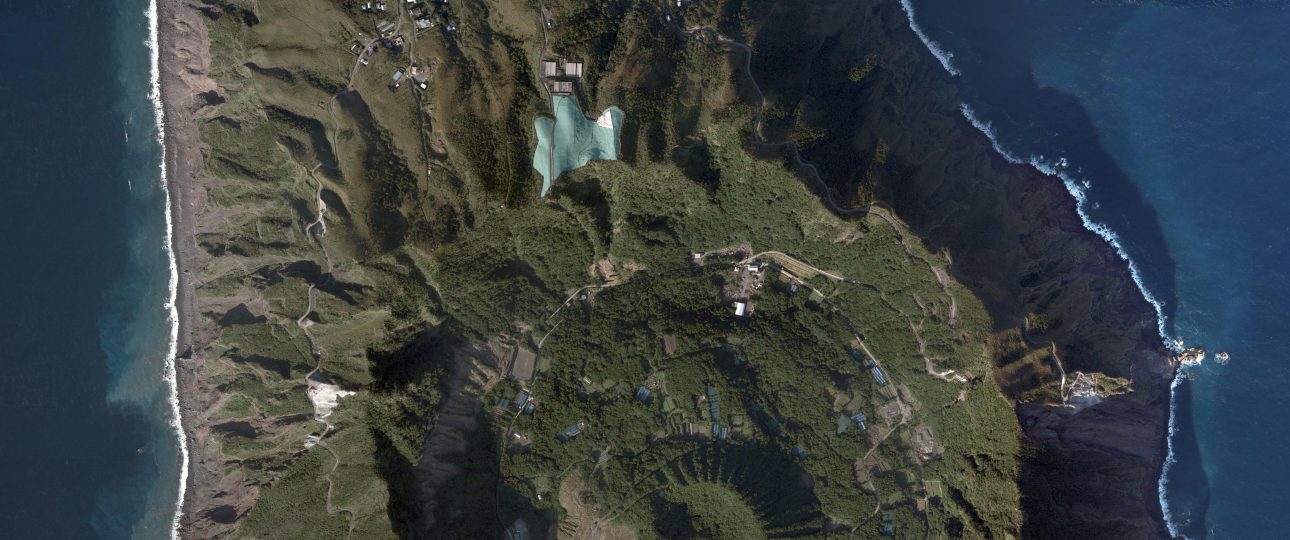Introduction
Welcome to this detailed travel guide on Aogashima Island, a remarkable destination in Japan. As an experienced traveler, I’ve visited many places, but Aogashima’s unique volcanic landscape and tranquil atmosphere make it truly memorable. In this guide, I’ll provide essential information to help you plan an enriching visit to this fascinating island.
Location and Geography
Aogashima Island is located in the Philippine Sea, about 358 kilometers south of Tokyo, Japan. Part of the Izu Archipelago, this volcanic island is characterized by its steep cliffs and lush vegetation. Aogashima is a complex volcanic island, formed by the overlapping remnants of at least four submarine calderas. The island’s most striking feature is its double volcano, with the smaller Maruyama cone nestled within the larger Ikenosawa caldera. The island’s highest point, Otonbu, rises to 423 meters, offering breathtaking views.
Unique Features
Aogashima Island offers several distinctive features that make it a captivating destination:
- Volcanic Caldera: The island’s caldera, Ikenosawa, is a geological marvel. The inner cone, Maruyama, adds to the dramatic landscape, and although the volcano is classified as active, it has not erupted since the late 18th century.
- Natural Hot Springs: Thanks to its volcanic nature, Aogashima boasts natural hot springs. These provide a relaxing way to enjoy the island’s serene environment.
- Rich Biodiversity: Recognized as an Important Bird Area, the island supports various bird species, including Japanese woodpigeons and Izu thrushes, making it a haven for birdwatchers.
- Small Community: Home to around 200 residents, the island’s traditional villages offer a glimpse into local life and culture, with a warm and welcoming community.
Best Time to Visit
The ideal time to visit Aogashima Island is during spring (April to June) and autumn (September to November) when the weather is mild and pleasant. Summers can be humid with frequent rain, while winters may be chilly. Planning your visit during these favorable seasons will enhance your experience.
How to Get There
Traveling to Aogashima Island requires careful planning, but the journey is rewarding. Follow these steps to reach the island:
- Fly to Tokyo, Japan, if you’re coming from abroad.
- From Tokyo, take a domestic flight to Hachijojima Airport, the nearest airport to Aogashima.
- Upon arrival at Hachijojima, travel to Hachijojima Port by taxi or bus.
- Board a ferry to Aogashima Island from Hachijojima Port. The ferry ride takes about three hours, so bring snacks and entertainment for the journey.
- Once on Aogashima, explore the island on foot, as it is compact and easy to navigate.
Local Transportation
Transportation options on Aogashima Island are limited, but sufficient for exploring:
- Walking: The island’s small size makes walking the best way to explore its natural beauty and attractions.
- Bicycle Rental: For a quicker pace, rent a bicycle from local shops to cover more ground while enjoying the fresh air.
- Taxi: A few taxis are available, though services may be limited. It’s advisable to book in advance or inquire at your accommodation.
Personal Experiences
During my visit to Aogashima Island, I was struck by its untouched beauty and peaceful atmosphere. Hiking to the top of the outer volcano offered stunning panoramic views of the caldera and the surrounding sea. The island’s lush greenery and the sound of birds created a sense of timeless tranquility.
Experiencing the island’s hot springs was another highlight. Soaking in the warm waters under a starry sky was both relaxing and rejuvenating, providing a deep connection with nature.
The local villagers were incredibly hospitable, sharing insights into their traditional lifestyle. Participating in a local dance performance was a memorable cultural exchange, leaving me with cherished memories.
Summary of Facts
Here are the key facts about Aogashima Island:
- Located in Japan, approximately 358 kilometers south of Tokyo.
- Features a volcanic caldera with the Maruyama cone within the larger Ikenosawa caldera.
- Offers natural hot springs, rich biodiversity, and a small, welcoming community.
- Best visited during spring and autumn for optimal weather.
- Accessible via Tokyo, with a domestic flight to Hachijojima and a ferry to Aogashima.
- Local transportation includes walking, bicycle rental, and limited taxi services.



